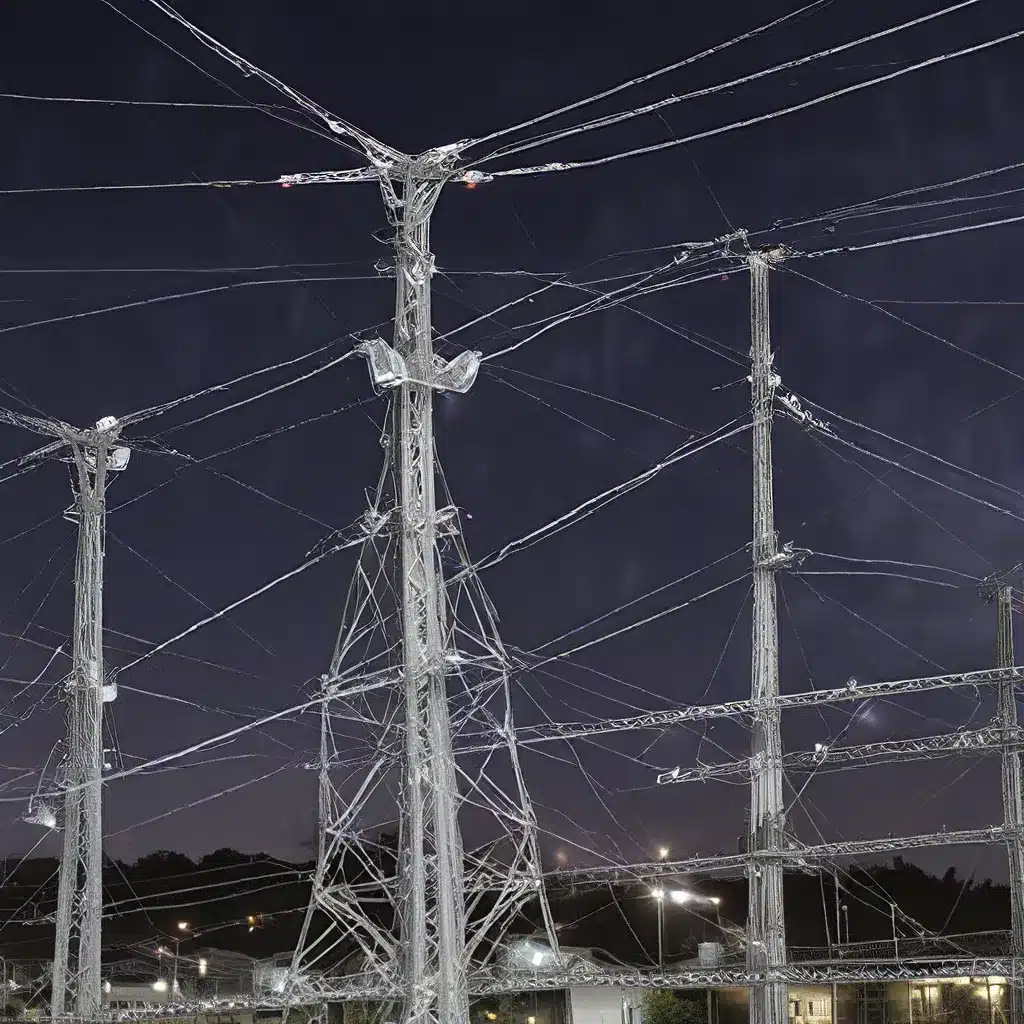
Securing Sensor Networks for Mission-Critical Applications
As the Internet of Things (IoT) continues to revolutionize the way we interact with the world around us, the criticality of sensor network reliability and security has never been more paramount. In sectors such as healthcare, transportation, and critical infrastructure, the failure or compromise of sensor-driven systems can have severe consequences, putting lives, property, and national security at risk.
To address these pressing challenges, researchers and engineers have been exploring innovative distributed algorithms that can enhance the fault tolerance and resilience of sensor networks. By leveraging the power of decentralized decision-making and self-healing mechanisms, these algorithms hold the promise of transforming how we design, deploy, and maintain sensor-driven systems in mission-critical applications.
Decentralized Monitoring and Fail-Safe Mechanisms
One of the key advantages of distributed algorithms in sensor networks is their ability to detect and mitigate faults and failures in a decentralized manner. Traditional centralized approaches often suffer from single points of failure, where the breakdown of a central control node can cripple the entire system. Distributed algorithms, on the other hand, empower individual sensor nodes to continuously monitor their own performance and that of their neighbors, enabling rapid fault detection and autonomous recovery actions.
Recent research has explored the use of consensus-based algorithms, where sensor nodes collaborate to reach a shared understanding of the network’s state. This allows for the identification of anomalies or malfunctioning nodes, which can then be isolated or replaced without disrupting the overall system’s functionality. By incorporating self-healing mechanisms, these distributed algorithms can enable sensor networks to adapt and reconfigure themselves in response to changing conditions, ensuring continuous service availability and mission assurance.
Optimizing Energy Consumption and Network Lifetime
In addition to fault tolerance, distributed algorithms play a crucial role in energy management within sensor networks. IoT deployments, particularly in remote or hard-to-access locations, often face significant power constraints, and the ability to optimize energy consumption is essential for prolonging the network lifetime.
Distributed algorithms can employ load-balancing techniques, where sensor nodes cooperatively manage their energy resources and share workloads to extend the battery life of individual nodes. This can involve dynamic clustering, where nodes self-organize into groups and elect cluster heads responsible for coordinating data collection, processing, and transmission. By leveraging in-network data aggregation and collaborative sensing, these algorithms can reduce the overall energy demand and prolong the operational duration of the sensor network.
Furthermore, distributed algorithms can enable adaptive duty-cycling, where nodes dynamically adjust their sleep/wake cycles based on real-time data requirements and network conditions. This allows for fine-tuned energy management, ensuring that sensor nodes only consume power when necessary, without compromising the quality of service or critical data collection.
Improving Security and Resilience against Cyber Threats
As sensor networks become increasingly integrated into our critical infrastructure, the need for robust security measures has become paramount. Distributed algorithms can play a pivotal role in enhancing the resilience of sensor networks against a variety of cyber threats, including denial-of-service attacks, node capture, and eavesdropping.
Distributed anomaly detection algorithms can continuously monitor network traffic and sensor node behavior, identifying and isolating any suspicious activities or unauthorized access attempts. By leveraging decentralized decision-making, these algorithms can quickly respond to threats without relying on a single point of failure, ensuring that the overall network maintains its operational integrity.
Moreover, distributed algorithms can facilitate secure routing protocols and decentralized key management systems, which are essential for protecting the confidentiality and integrity of sensor data. By distributing the cryptographic key generation and distribution across multiple nodes, these algorithms can mitigate the risks associated with the compromise of individual sensor devices.
Adapting to Diverse IoT Deployments and Future Trends
The versatility of distributed algorithms in sensor networks extends beyond fault tolerance, energy management, and security. These algorithms are also being explored to address the heterogeneity and scalability challenges inherent in IoT deployments, where sensor networks must accommodate a wide range of devices, protocols, and application requirements.
Distributed resource allocation algorithms can dynamically manage the networking, computing, and storage resources within a sensor network, ensuring efficient utilization and load balancing across diverse nodes. This enables sensor networks to adapt to changing conditions and support a variety of IoT applications, from real-time monitoring to edge computing and machine learning.
As the IoT landscape continues to evolve, the need for self-organizing, self-healing, and self-optimizing sensor networks will only become more pressing. Distributed algorithms hold the key to unlocking the full potential of sensor-driven technologies, empowering critical infrastructure, industrial automation, and a wide range of other mission-critical IoT applications.
Conclusion: Embracing the Future of Sensor Networks
The advancements in distributed algorithms for sensor networks are poised to revolutionize the way we design, deploy, and maintain IoT systems in mission-critical environments. By leveraging the power of decentralized decision-making, self-healing mechanisms, and adaptive energy management, these algorithms are transforming the landscape of sensor network reliability, security, and resilience.
As the world becomes increasingly interconnected and reliant on sensor-driven technologies, the importance of fault-tolerant, energy-efficient, and secure sensor networks cannot be overstated. The continued development and widespread adoption of distributed algorithms will play a pivotal role in safeguarding our critical infrastructure, enhancing industrial automation, and improving the overall quality of life for individuals and communities worldwide.
To stay at the forefront of this technological revolution, we encourage you to explore the resources and insights available on our website, where we continuously share the latest advancements, case studies, and best practices in the dynamic world of sensor networks and IoT.